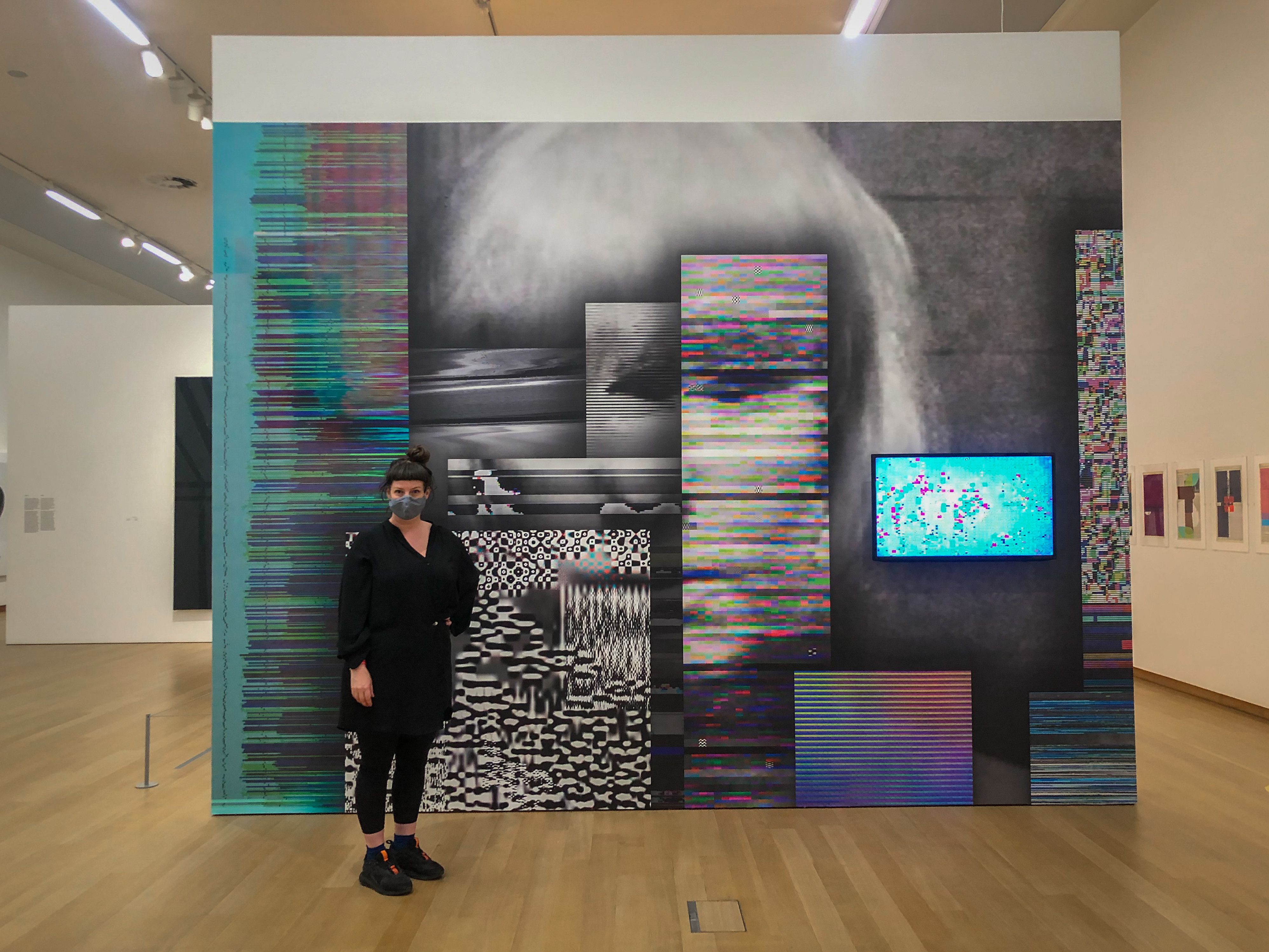
A Vernacular of File Formats (2010) - Rosa Menkman
In the collection of Stedelijk Museum Amsterdam.
Rosa Menkman’s A Vernacular of File Formats (2010) is a seminal work that challenges traditional notions of ownership, exhibition, and preservation. By intentionally glitching a self-portrait through various file formats, Menkman explores the unique visual signatures of digital compression. This evolving work raises intriguing questions about how we archive and sustain art that defies static representation. LI-MA, in collaboration with the Stedelijk Museum, delves into these complexities in a comprehensive case study.
Brief Description of the Work
In 2010, Rosa Menkman introduced A Vernacular of File Formats, which can be described as an archive stemming from an extensive research project on file formats—encoding systems that organise data with specific syntax. The artwork features intentionally glitched images, all derived from a single self-portrait, processed through various file formats. Each glitch reveals the unique aesthetic of the data organisation inherent in these formats.
Change and Variability by Nature
A file format is an encoding system that organises data according to a particular syntax. These organisations are commonly referred to as compression algorithms. The choice of compression is influenced by factors like intended use—whether for print or digital distribution—and the necessary accuracy, as well as the software or hardware used to render the image. This work's output, whether in exhibitions or other contexts, is conceptually variable, appearing in different forms such as prints or digital displays. The archive itself is dynamic, continually evolving as Menkman revisits and repurposes aspects of the artwork.

Exhibiting and Publishing A Vernacular of File Formats
Over the years, A Vernacular of File Formats has appeared in various forms, from its beginnings as a PDF guide to databending, to its controversial sale as an NFT. The artwork has been exhibited globally in numerous iterations, including video installations and prints. Menkman has expressed a preference for physical prints, where the texture and pixelation of the images are tangible.
One notable moment in the artwork’s history was its inclusion in a Sotheby’s NFT auction, which sparked controversy when Menkman’s image was used without her permission, leading her to embed a hidden message in the NFT: "The true value of a work of art extends beyond its market, enwrapping both its cultural and historic significance."
Artwork Versus Archive
A Vernacular of File Formats (2010) was acquired from Rosa Menkman in December 2016 by MOTI Museum of the Image (this collection became part of Museum Breda) and the Stedelijk Museum Amsterdam. It was acquired as a 16 - 18 GB archive of files put together by the artist in collaboration with the museums, containing: Source video and frames, Catalogue of Unstable Glitched files, Monglot (glitching software), the PDF, stable printed iterations and production documentations of prints and exhibitions.
The archive consists of hundreds of files in different file formats ranging from video's, images in multiple compression languages, PDF and text documents. LI-MA proposed to pack the files in an archival folder format to be stored together. Adding individual database and storage entries for the PDF guide, the source image, source video, glitched images and the stable iterations for exhibition. All other material could be packed together as documentation. The Monglot software, that the artist created inorder to have more control in glitching images during lectures and workshops, was made for Mac OS 10.6/10.7, an operating system which is now obsolete.
An Open Archive and Yearly Encapsulation
How to acquire and sustain a living archive or changing artwork? Menkman envisions the archive as an open, evolving entity, allowing for continuous additions and developments. However, museums typically prefer encapsulation or the storage of multiple versions, rather than a perpetually editable archive. This case study highlights the challenges of acquiring, storing, and maintaining an ongoing, open-ended work.
To address these concerns, Menkman is collaborating with Transfer Gallery on the TRANSFER Data Trust, a decentralised, artist-owned archive. This initiative allows her to keep adding to her archive while ensuring its safety. It also provides LI-MA and the museum the opportunity to make regular updates to the archive.LI-MA is interested in becoming a node in the TRANSFER Data Trust platform.
This case study will continue as part of FOMU’s research into digital photography, focusing on workflows for acquiring and sustainably storing extended digital formats. Additionally, an SBMK working group has been established to update acquisition contracts, making them suitable for evolving and open-ended artworks.
Publicly Available
Last but not least is the artist's wish to make the entire archive publicly available online. Seeing as the work started as a guide to data bending in PDF format, Menkman website or platform as the next step in the artwork’s evolution. To facilitate this, LI-MA has proposed storing the archive on ArtHost, hosting the source code on Gitlab, and storing videos in its digital repository as well as on LTO-8. However, these recommendations have not yet been implemented.
Access to the full case study report, interview, and object-related documents is available on request via info@li-ma.nl. Research by LI-MA team in collaboration with: Rosa Menkman (Artist), Flaminia Fortunato (Time-Based Media Art Conservator, Stedelijk Museum Amsterdam), Karen Archey (Conservator Contemporary Art, Stedelijk Museum Amsterdam).
Header: Rosa Menkman, It Takes More than the Past to Understand and Build the Archive, video, 34:43, 2020.






